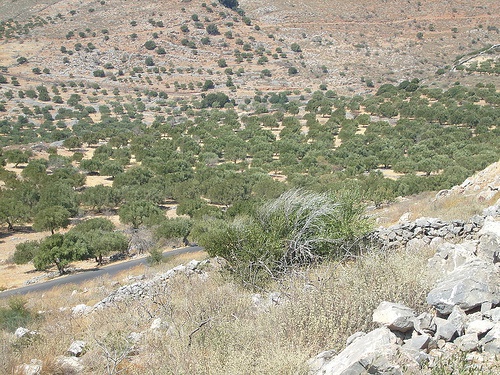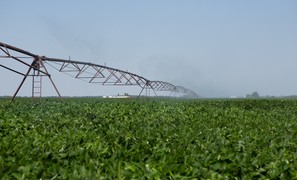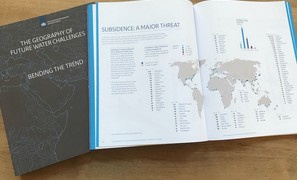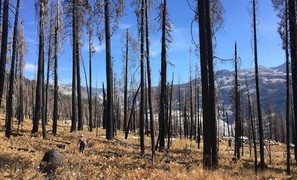Impact of climate change on water resources Crete (Greece)

The rapid development of Crete since 1980 has exerted strong pressures on many natural resources. Due to urbanization and the growth of agriculture and tourism industry, water demand has substantially increased by over 55% during the period 1985 - 2000. However, any arising water stress issue will be due to poor extraction or retention technology rather than actual availability.
The current annual water balance of Crete breaks down to 68–76% evapotranspiration, 14–17% infiltration and 10–15% runoff. Total water use in 2000 amounted to approximately 5.5% of the precipitation of a normal year and 16% of the total water potential. An average of 65% of the total water use is supplied by groundwater exploitation while the remaining 35% is obtained from winter spring and stream discharges. Of this, 16% is used for domestic, tourist, and industrial uses, 3% for livestock and a vast 81% for irrigated agriculture.
The impact of climate change on the water resources status for the island of Crete has been assessed for a range of 24 different scenarios from a combination of projected hydro-climatological regimes, demand and supply potentials. Overall, a robust signal of water insufficiency is projected for all the combinations of emission, demand and infrastructure scenarios, with the estimated deficit ranging from 10% to 74%.
According to these results, local water management planning and adaptation strategies need to be improved and updated in order to attain future water security. Priority should not only be given to the increase of irrigated areas but also to promoting a more sustainable irrigation practice for existing and new agricultural land. Besides, strategies of adaptation to consider should include wastewater recycling and reuse that are estimated to lead to water savings of up to 5% of the total irrigation water of Crete.
Source: Koutroulis et al., 2013. Journal of Hydrology 479: 146–158.
Photo: Bruce Harlick (www.flickr.com)






